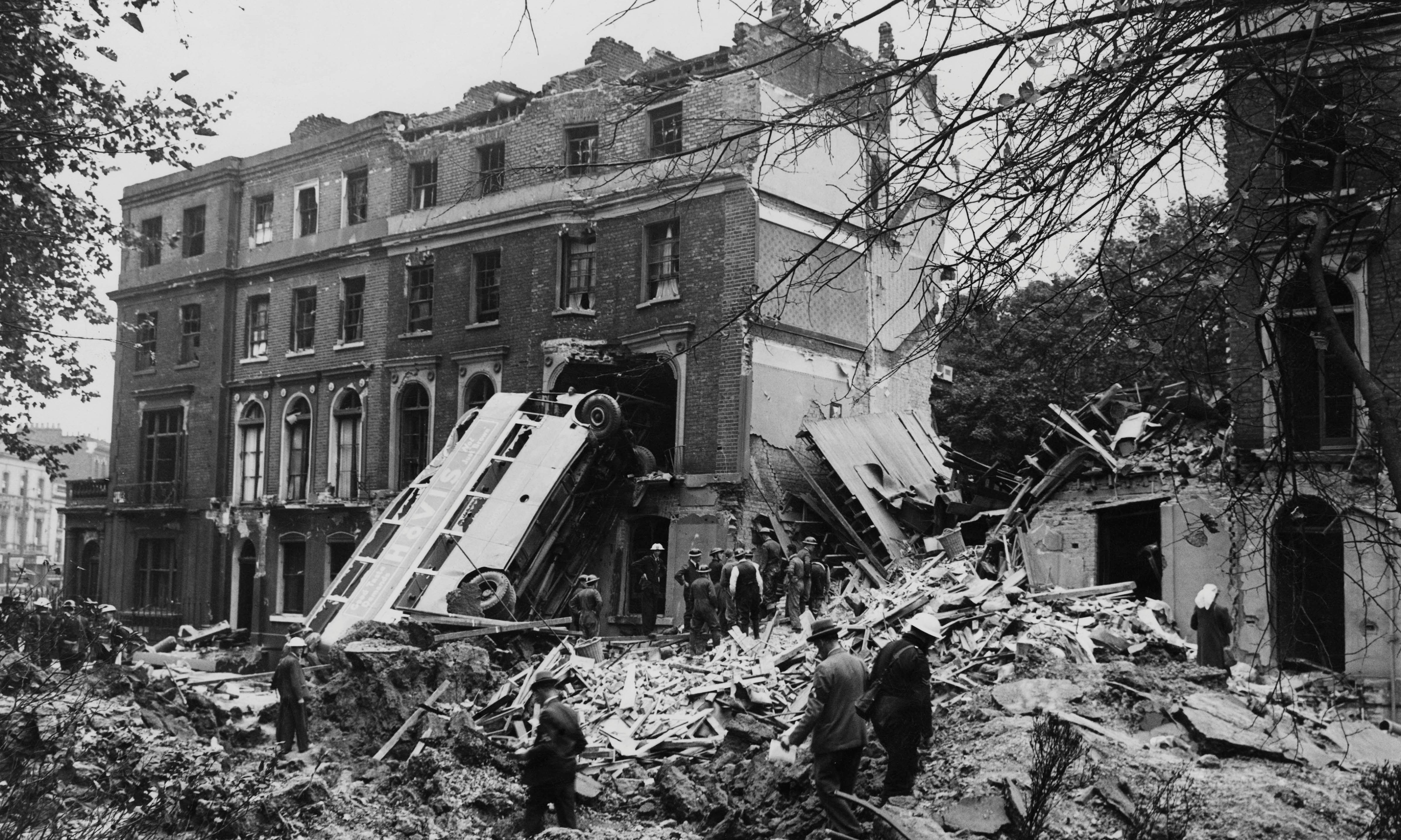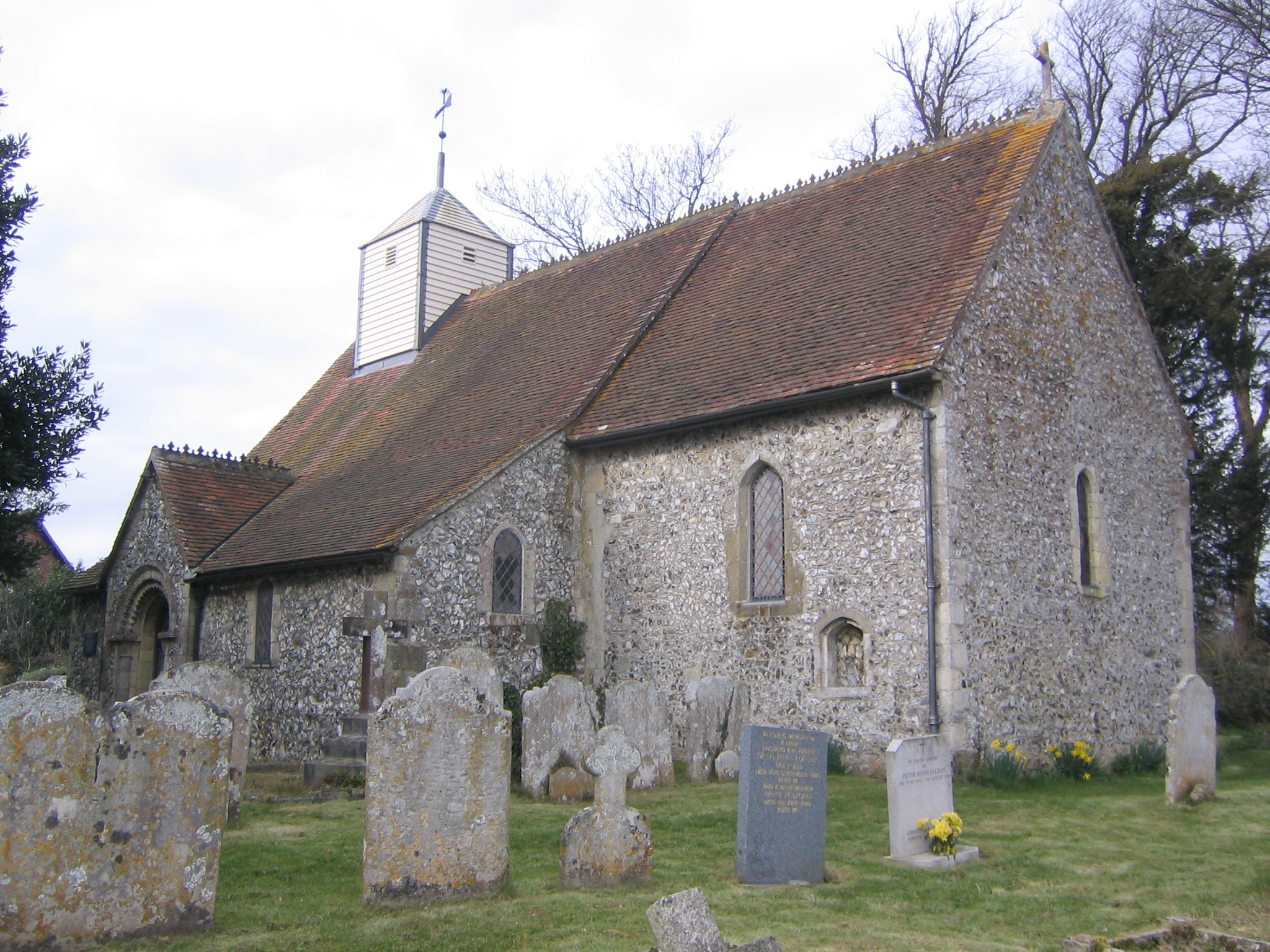|
St Swithin, London Stone
St Swithin, London Stone, was an Anglican church in the City of London. It stood on the north side of Cannon Street, between Salters' Hall Court and St Swithin's Lane, which runs north from Cannon Street to King William Street and takes its name from the church. Of medieval origin, it was destroyed by the Great Fire of London, and rebuilt to the designs of Sir Christopher Wren. It was badly damaged by bombing during the Second World War, and the remains were demolished in 1962. Medieval church St Swithin's Church was first recorded in the 13th century, and was dedicated to Saint Swithin, a 9th-century bishop of Winchester. At first known as "St Swithin in Candlewick Street" (the medieval name of Cannon Street), in 1597 it was referred to as "St Swithin at London Stone", and this became the normal designation. London Stone itself stood on the south side of Candlewick Street, opposite the church. One of the earliest references to the church is as the final resting place of Catrin ... [...More Info...] [...Related Items...] OR: [Wikipedia] [Google] [Baidu] |
London Stone
London Stone is a historic landmark housed at 111 Cannon Street in the City of London. It is an irregular block of oolitic limestone measuring 53 × 43 × 30 cm (21 × 17 × 12"), the remnant of a once much larger object that had stood for many centuries on the south side of the street. The name "London Stone" was first recorded around the year 1100. The date and original purpose of the stone are unknown, although it is possibly of Roman origin. There has been interest and speculation about it since the medieval period, but modern claims that it was formerly an object of veneration, or has some occult significance, are unsubstantiated. Description The present London Stone is only the upper portion of a once much larger object. The surviving portion is a block of oolitic limestone approximately 53 cm wide, 43 cm high, and 30 cm front to back (21 × 17 × 12 inches). A study in the 1960s indicated that the stone is Clipsham limestone, a good-q ... [...More Info...] [...Related Items...] OR: [Wikipedia] [Google] [Baidu] |
Welsh People
The Welsh () are an ethnic group and nation native to Wales who share a common ancestry, History of Wales, history and Culture of Wales, culture. Wales is one of the four countries of the United Kingdom. The majority of people living in Wales are British nationality law, British citizens. In Wales, the Welsh language () is protected by law. Welsh remains the predominant language in many parts of Wales, particularly in North Wales and parts of West Wales, though English is the predominant language in South Wales. The Welsh language is also taught in schools in Wales; and, even in regions of Wales in which Welsh people predominantly speak English on a daily basis, the Welsh language is spoken at home among family or in informal settings, with Welsh speakers often engaging in code-switching and translanguaging. In the English-speaking areas of Wales, many Welsh people are Multilingualism, bilingually fluent or semi-fluent in the Welsh language or, to varying degrees, capable o ... [...More Info...] [...Related Items...] OR: [Wikipedia] [Google] [Baidu] |
All Hallows By The Tower
All Hallows-by-the-Tower, at one time dedicated jointly to All Hallows (All Saints) and the Virgin Mary and sometimes known as All Hallows Barking, is an Early Medieval Anglican church on Byward Street in the City of London, England, overlooking the Tower of London. According to the church website and other sources it is "the oldest church in the City of London" and was founded in AD 675, although recent research has questioned these claims. The church survived the Great Fire of London in 1666, but was badly damaged during the Blitz in World War II. Following extensive reconstruction, it was rededicated in 1957. From 1922 until 1962 the vicar was Tubby Clayton, and the church is still the guild church of Toc H, the international Christian organisation that he founded. History The origin and early history of All Hallows-by-the-Tower church are obscure. At the time of the Dissolution of the Monasteries in 1539 the church belonged to Barking Abbey, a Roman Catholic ... [...More Info...] [...Related Items...] OR: [Wikipedia] [Google] [Baidu] |
Airstrike
An airstrike, air strike, or air raid is an offensive operation carried out by aircraft. Air strikes are delivered from aircraft such as blimps, balloons, fighter aircraft, attack aircraft, bombers, attack helicopters, and drones. The official definition includes all sorts of targets, including enemy air targets, but in popular usage the term is usually narrowed to a tactical (small-scale) attack on a ground or naval objective as opposed to a larger, more general attack such as carpet bombing. Weapons used in an airstrike can range from direct-fire aircraft-mounted cannons and machine guns, rockets and air-to-surface missiles, to various types of aerial bombs, glide bombs, cruise missiles, ballistic missiles, and even directed-energy weapons such as laser weapons. In close air support, air strikes are usually controlled by trained observers on the ground for coordination with ground troops and intelligence in a manner derived from artillery tactics. History Beginnings Th ... [...More Info...] [...Related Items...] OR: [Wikipedia] [Google] [Baidu] |
Chandelier
A chandelier () is an ornamental lighting device, typically with spreading branched supports for multiple lights, designed to be hung from the ceiling. Chandeliers are often ornate, and they were originally designed to hold candles, but now incandescent light bulbs are commonly used, as well as fluorescent lamps and light-emitting diode, LEDs. A wide variety of materials ranging from wood and earthenware to silver and gold can be used to make chandeliers. Brass is one of the most popular with Dutch or Flemish brass chandeliers being the best-known, but glass is the material most commonly associated with chandeliers. True glass chandeliers were first developed in Italy, England, France, and Bohemia in the 18th century. Classic glass and crystal chandeliers have arrays of hanging "crystal" Prism (optics), prisms to illuminate a room with Refraction, refracted light. Contemporary chandeliers may assume a more minimalist design, and they may illuminate a room with direct light from t ... [...More Info...] [...Related Items...] OR: [Wikipedia] [Google] [Baidu] |
Festoon
A festoon (from French ''feston'', Italian ''festone'', from a Late Latin ''festo'', originally a festal garland, Latin ''festum'', feast) is a wreath or garland hanging from two points, and in architecture typically a carved ornament depicting conventional arrangement of flowers, foliage or fruit bound together and suspended by ribbons. The motif is sometimes known as a swag when depicting fabric or linen.Sturgis, pp. 22-23 In modern English the verb forms, especially "festooned with", are often used very loosely or figuratively to mean having any type of fancy decoration or covering. Origins and design Its origin is probably due to the representation in stone of the garlands of natural flowers, etc., which were hung up over an entrance doorway on fête days, or suspended around an altar. The design was largely employed both by the Ancient Greeks and Romans and formed the principal decoration of altars, friezes and panels. The ends of the ribbons are sometimes formed into ... [...More Info...] [...Related Items...] OR: [Wikipedia] [Google] [Baidu] |
St Mary Bothaw
St Mary Bothaw (or Saint Mary Boatehaw by the Erber) was a parish church in the Walbrook ward of the City of London. It was destroyed in the Great Fire of London in 1666 and not rebuilt. However, some of its materials were used in the rebuilding of St Swithin, London Stone, with which parish it was merged. Location The church stood in the Walbrook ward, in a narrow lane just to the south of Candlewick Street (now Cannon Street). History St Mary Bothaw was described by Stow as a "proper church". The dedication is generally derived from "boat-haw", meaning "boat house". The church was in existence by 1279, when William de Hamkynton was recorded as becoming rector following the death of Adam Lambyn. It was one of the 13 "peculiars" within the City under the patronage of the dean and chapter of Canterbury Cathedral. Robert Chichele, Lord Mayor of London, in 1422, was buried in the church. According to some sources, St Mary's also contained the tomb of Henry Fitz-Ailwin de Londo ... [...More Info...] [...Related Items...] OR: [Wikipedia] [Google] [Baidu] |
Copperplate Map London Stone
{{disambig ...
Copperplate (or ''copper-plate'', ''copper plate'') may refer to: * Any form of intaglio printing using a metal plate (usually copper), or the plate itself ** Engraving ** Etching * Copperplate script, a style of handwriting and typefaces derived from it * Copperplate Gothic, a glyphic typeface designed by Frederic Goudy in 1901 * Indian copper plate inscriptions, ancient Indian records of royal lineages, land grants etc. * A plate made of copper See also *Copper plating (other) *Old master print *Printmaking Printmaking is the process of creating work of art, artworks by printing, normally on paper, but also on fabric, wood, metal, and other surfaces. "Traditional printmaking" normally covers only the process of creating prints using a hand proces ... [...More Info...] [...Related Items...] OR: [Wikipedia] [Google] [Baidu] |
Henry VIII Of England
Henry VIII (28 June 149128 January 1547) was King of England from 22 April 1509 until his death in 1547. Henry is known for his Wives of Henry VIII, six marriages and his efforts to have his first marriage (to Catherine of Aragon) annulled. His disagreement with Pope Clement VII about such an annulment led Henry to initiate the English Reformation, separating the Church of England from papal authority. He appointed himself Supreme Head of the Church of England and dissolution of the monasteries, dissolved convents and monasteries, for which he was List of people excommunicated by the Catholic Church, excommunicated by the pope. Born in Greenwich, Henry brought radical changes to the Constitution of England, expanding royal power and ushering in the theory of the divine right of kings in opposition to papal supremacy. He frequently used charges of treason and heresy to quell dissent, and those accused were often executed without a formal trial using bills of attainder. He achi ... [...More Info...] [...Related Items...] OR: [Wikipedia] [Google] [Baidu] |
Tortington
Tortington is a small village and former civil parish, now in the parish of Arundel, in the Arun District, Arun district of West Sussex, England. It lies between the Arundel to Ford, West Sussex, Ford and the Arundel to Chichester roads, southwest of Arundel. In 1961 the parish had a population of 617. On 1 April 1985 the parish was abolished and merged with Arundel, Ford, Slindon and Walberton. History Before the Norman Conquest of 1066 the farmland of Tortington was tilled by an Anglo-Saxon freeman called Leofwine. By the time William's commissioners visited this part of Sussex just twenty years later to sit in the shire court and evaluate property for the great Domesday Survey, there were 8 households in the settlement. The land (plough land, woodland and 30 acres of meadows), in the Hundred of Binsted, was worked by Ernucion, also a freeman but a tenant of Earl Roger de Montgomery, whose loyal service to the Conqueror had been rewarded by the granting of huge tracts of land ... [...More Info...] [...Related Items...] OR: [Wikipedia] [Google] [Baidu] |







